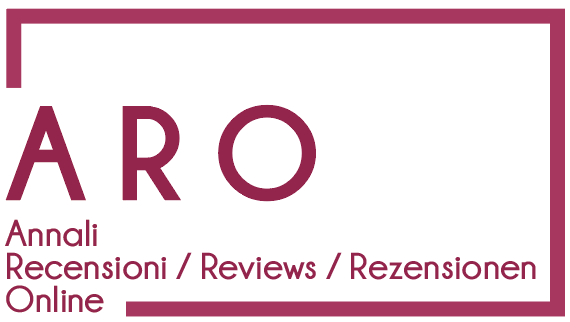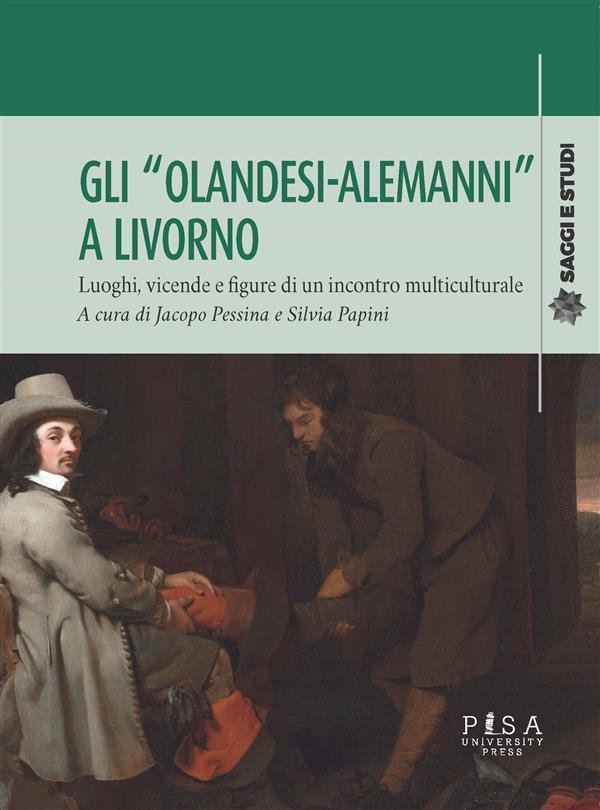


Reviewer Corey Tazzara - Scripps College
CitationSome fifteen years ago I attended a conference in Livorno where, cigar in hand, Giovanni Levi all but accused the assembled scholars of provincialism: of never lifting their eyes from the petty problems of their beloved city. If Levi’s accusation was something of an exaggeration at the time, it is profoundly false today, as this volume demonstrates. One is struck by the quality of the essays as well as with how they engage a diverse and international range of historiographies. For a body of scholarship that has focused on the presence of Jews, Englishmen, and Levantines, this volume constitutes a landmark achievement in enriching our understanding of an important but long-marginalized group.
This volume contains some twenty-two essays on the Dutch and German connection in Livorno and related places, plus an introduction by the editors. The book focuses predominantly on the classic age of Livorno in the early modern period, although it also contains one section examining the connection in subsequent centuries; and while the essays focus on commercial relations, a substantial minority also examine cultural and artistic matters. Taken together, it thus comprises a kind of omnibus for the current state of knowledge for relations between Livorno (as well as Genoa and Naples, which also figure in several essays) and the diverse peoples known to the city as the Olandesi-Alemanni. The volume contains a set of beautiful color plates but no index, alas.
It is, of course, difficult to summarize the contents of such a diverse set of essays. Overall, I am struck by the quality and engagement with the historiography represented by these essays. I would therefore like to signal a few of the essays and themes, based not on an assessment of their relative merits, but simply on my interests.
The introduction begins with a quotation by Magnus Ressel highlighting the need «for a more accurate program of research, attentive to the chronology, and based on documentation that is not purely Italian» (p. 13, my translation). For there is a basic problem bedeviling studies of the Olandesi-Alemanni: a scattered array of archives and several different groups, each with its own national historiography. Ressel’s own contribution to the volume proposes a new chronology for situating the relative weights of the Dutch, Hamburger, and Swiss elements within the community that will be the basis for further work on these groups, their internal relations, and their commerce.
Livorno has long been treated as a crossroads of Mediterranean commerce. This volume will add interesting points of some neglected visitors (temporary or otherwise) to the city. But perhaps even more interesting is the way in which Livorno, no longer treated simply as a place of convergence, is now revealed in its more divergent elements. In his fine article on ransom activity in North Africa, Andrea Addobbati examines the activity of Thomas Goodwyn, the English consul in Tunis between 1683 and 1698: this figure, whom he treats as a perfect «anglo-maghribi,» was tied not only to English commercial interests but also to Dutch interests in Livorno – in particular, to those stemming from the ransom of Dutch mariners, which were negotiated through the Tuscan port. (It is worth noting that Goodwyn is also the subject of a series of recent articles by Nat Cutter.) Or another example, taken from the contribution by Jacopo Pessina on the soldatescha alemanna during the Medici era: the recruitment of soldiers was managed far from Livorno itself, in the German lands which supplied the soldiers, and often exploiting the social networks of veterans themselves (see pages 186-188). What is clear from such examples, and they could easily be multiplied, is how Livorno’s connections to quite distant places went far beyond the movement of merchandise. With the integration of Livorno studies into a more international historiography, then, one also finds a kind of diversification of the range of studies appropriate to the city.
Refocusing beyond the city walls offers an additional benefit, revealing how the port of Livorno was entangled in other circuits of trade than those emphasized by the older historiography. Thus, in his article, Giorgio Tosco emphasizes not only «competition and rivalry,» old stalwarts of the historiography (p. 43), but also the ways in which Genoa and Livorno formed part of a single matrix of trade, especially from the point of view of the Dutch merchants who increasingly visited both ports from the late sixteenth-century on. In Ressel’s article, again, we see the important and little-studied phenomenon of the overland trade to Switzerland and other parts of Central Europe. Clearly, the stature of Livorno in long-distance maritime trade had important consequences for local maritime relations in the Tyrrhenian as well as for overland trading routes in Italy and beyond. And given the limitations of the sources in Livorno, such consequences will only be revealed by studies undertaken outside of Tuscany.
A third theme of the volume concerns the stature of Livorno as a matrix of culture. The cultural history of Livorno remains one of the weakest facets of its historiography, in spite of – or because of – the city’s proximity to Florence. If economic and social historians sometimes ignore the realm of high culture, however, it is not an error that art historians will make: as Martina Panizzutt notes, «the two spheres, artistic and mercantile, were ever more intertwined» (pp. 386-387). For Livorno, the statement points to the involvement of merchants in the international trade in paintings and objets d’art, and all that such circulation amounted to for the development of cultural life in Europe during the early modern period. But the position of Livorno also made it a frequent stopping-point for northern painters en route to Italy. Their sojourns furnish tantalizing hints of the commissions they executed for locals. Thus, Silvia Papini recounts an episode (pp. 362-363) in which a tavern connected three Dutch painters to the Jewish merchant and art collector Isaque Coronel, who commissioned several works of art – not all of which the painters were able to complete, owing to the burdens of several other commissions. Clearly, Livorno did not just broken the international art market: it consumed art, too. The culture of merchants in Livorno remains an evergreen topic for investigation, although this is a theme that the essays here touch upon more obliquely than the interest of the question deserves.
These points will hopefully illustrate the high methodological and historiographical caliber of these studies. Gli “Olandesi-Alemanni” a Livorno will be essential reading for anybody interested in the history of relations between Italy, northern Europe, and the Mediterranean.